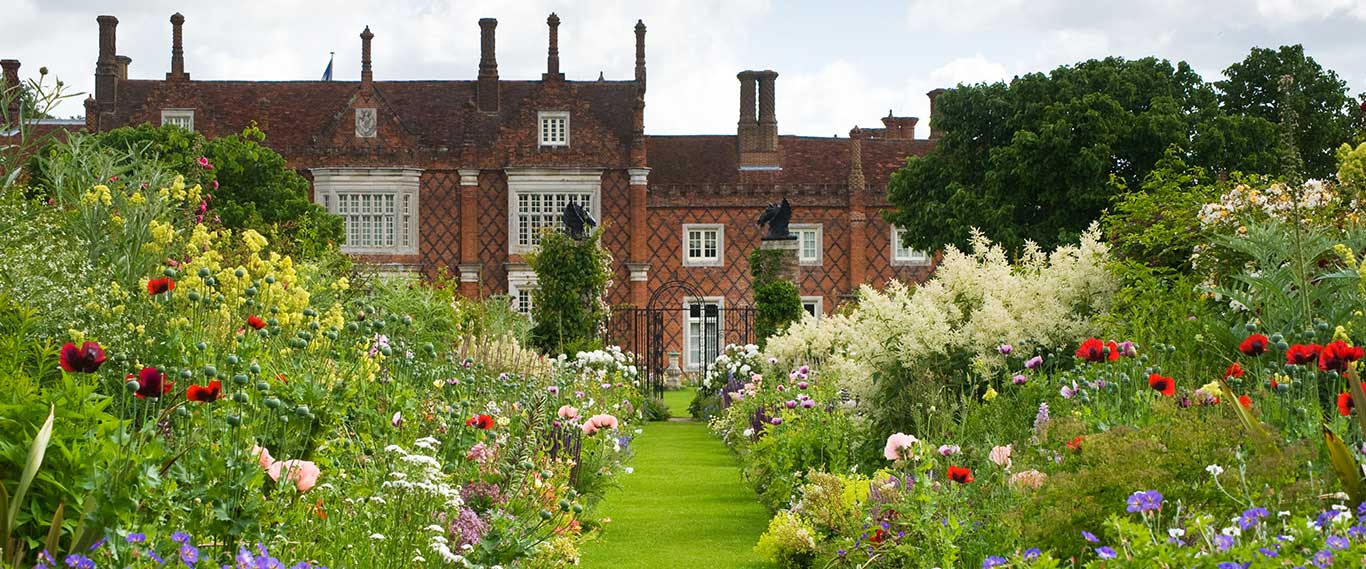We are extremely proud to have been crowned the winner of the 2017 Historic Houses Association (HHA) Garden of the Year Award, sponsored by Christie’s.
This prestigious national award, presented annually since 1984, is designed to recognise the importance of some of the country’s most spectacular gardens with outstanding horticultural and public appeal. The Award is voted for by HHA Friends who judge the gardens purely based on their enjoyment.
We are so proud to achieve this wonderful accolade – we have a fantastic, hardworking team of gardeners who deserve recognition for their work. We want to thank everyone that voted for us and we hope that many more thousands of people can visit and enjoy the gardens again this year.
Maev Kennedy from The Guardian writes:
When Xa Tollemache first walked out into her new garden, crossing not one but two moats into acres of flowers and vegetables, her heart sank into her new boots at the scale of the task of maintaining it.
More than 40 years later, the garden of Helmingham Hall near Ipswich in Suffolk, open to the public from May until mid-September, is about to be named the Historic Houses Association’s garden of the year, voted for by its visitors.
It has also been Tollemache’s training ground for a career as a Chelsea gold medal-winning garden designer, but at first it filled her with dread.
“We already had our daughter, I was three months pregnant with our second child, and I didn’t know anything about gardening. It looked like a life sentence,” she said. “It felt a terrifying responsibility. The garden was so old and had been maintained by so many generations, and I really didn’t want to be the one to let it go to rack and ruin.”
The garden, surrounded by 160 hectares (400 acres) of deer park, is older than the house and was already ancient when the Tollemaches married into the estate in 1487. It was walled in 1745, but the moat around it probably dates back to the Anglo-Saxon period, when it served as a fish pond and cattle stockade.
When John Tollemache married the 15th-century Helmingham heiress, he promptly knocked down her house and built a smarter redbrick mansion which survives almost unchanged, though some bigger rooms were added by a 19th-century Tollemache who had 24 sons and a daughter by two wives.
The house is surrounded by the second moat, and the drawbridge is still solemnly raised every night, a responsibility soon to be passed on to the next generation as Xa and Lord Tollemache move out and their eldest son and his wife and children take over.
The garden, which once employed a small army, is now looked after by three full-time gardeners headed by Ray Balaam, who has worked at Helmingham for 60 years.
Many of Tollemache’s innovations have been attempts to curb the terrifying fertility of the soil. “It still feeds the entire household and gives us something to sell in the shop, but it used to feed the whole village,” she said. “There was just more than I could ever cook, eat or freeze. I think my mother-in-law spent her entire life podding peas.”
The smaller beds, a spiral of wild flowers cut into a lawn, and the arched walks with hoops of roses, sweet pea and ornamental gourds, were all ways of cutting down the space devoted to vegetables without appearing to destroy the character of the garden.
Outside the walls she has added an avenue of apple trees, a wild flower meadow and a woodland area surrounding a copse of birches. The trees, like many of the more statuesque plants, were recycled from Chelsea flower shows because she is unable to tolerate waste.
Recently, on her last day working for a client on a garden in Virginia, racing to finish planting thousands of trees, she seriously strained her back, and when she got back to England was ordered to rest for at least a week. Instead she hired a digger, and spent a happy week digging out a pair of yin yang banks and a spiral sloping down to a small pond.
The woodland garden, unlike the surviving acres of vegetables, is very low maintenance, so she hopes the next generation might at least be able to cope with it. At present none of her three children has any interest in gardening – but as she knows herself, that could all change.


